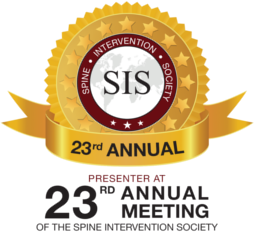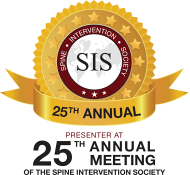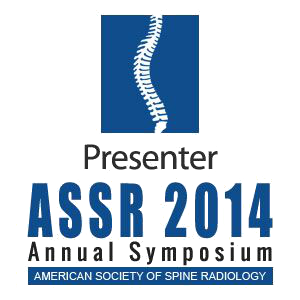Frequently Asked Questions Regarding Spine and Neck Surgery
Dr. Rappard coined the phrase "the four pillars for the treatment of chronic spinal pain." Early in our practice we became interested in developing an underlying practice philosophy that would lead to our patients receiving more efficient and effective care. In addition, we wanted to develop a philosophy of care that would avoid most of the pitfalls commonly associated with spinal care and would minimize unnecessary treatment failures. The key is that we listen to our patients so that we can prescribe the right treatments to begin with, thus maximizing a patient’s chance to succeed. We also utilize an escalating care model. We make sure you have been maximally treated at one step before progressing to another step in your treatment.
The first pillar: Choosing the right type of therapy
The first pillar in the treatment of chronic spinal pain is tailored therapy. Tailored therapy utilizes multiple treatment modalities to maximize the patient's outcomes. We believe that therapy is not one size fits all. We have found some patient's benefit more from core strengthening while others require a conditioning program. We have also witnessed that chiropractic care, including manipulation, results in high patient satisfaction rates and significant improvement. Lastly, we have seen many of our patients benefit from acupuncture. By working with the right therapeutic modalities patients can be successfully treated early on without requiring extensive medications or medical procedures.
The second pillar: Selecting newer and more effective medical therapy
The second pillar is appropriate medical management. Many new medications are now available that can provide good results without the side effects of older medications. For example, pain creams consist of prescription medications that are applied to the skin, avoiding side effects that are present when taken orally. Some medications are better for back pain, while others are better for sciatica. Medications can provide a patient who has not done well in therapy the ability to obtain relief without having medical procedures.
The third pillar: Injectional therapy that is more likely to work
When minor procedures are needed it’s important that the right ones are performed. That may seem obvious, but it’s actually rather common for patients to undergo multiple procedures, like epidural steroid injections, that either have no benefit or may not have been indicated to begin with. For example, an epidural injection will provide little benefit to patients suffering from whiplash, yet is the most commonly ordered procedure. We carefully choose our prescribed procedures and injections based on a careful evaluation. Dr. Rappard performs all of his injection procedures personally, so he knows what is likely to work best, and no one receives an injection without a prior intensive one-on-one with Dr. Rappard. When we prescribe an injection procedure we feel it is more likely to help because it has been carefully chosen. That way, patients are less likely to go on and need surgery.
The fourth pillar: When surgery is needed, choose surgery that will preserve your natural spine
Unfortunately, some patients will be in a lot of pain despite expert therapy, effective medications and the right type of injections. Some patients will choose to suffer in life long pain because they are concerned about the risks and recovery of spine surgery. By offering surgery that maximizes recovery and maximizes the normal motion and stability of the spine we can now provide a surgical option like never before-The fourth pillar in treating chronic spinal pain. Most surgery, even surgery that is referred to as minimally invasive, involves cutting through important “core” muscles, stabilizing ligaments and even removing important spinal joints. All of this can result in a prolonged recovery, post-operative pain and future problems. Our specialized surgical techniques can achieve the same results as conventional surgery without the collateral damage to important spinal structures. That means a fast recovery. The results are also outstanding. Our recently presented data reported a 94% success rate in treating back pain due to herniated disc.
Minimally invasive spine surgery is a term that generally is defined as the performance of spine surgery in such a way as to minimize tissue damage and maximize recovery potential. While most physicians would agree with that definition it’s the interpretation that has become very loose.
On a surgeon by surgeon basis minimally invasive surgery becomes very subjective. Often it’s interpreted as “what’s the least invasive means I know of to perform what I deem to be effective spine surgery.” As a result, surgeon A may define minimally invasive as a 20mm skin incision and shaving off of portions of bone to perform a discectomy as an outpatient procedure. Down the street surgeon B may define minimally invasive as the complete removal of the disc, removal of most of a spinal joint, placement of a graft and prosthesis and placement of screws and rods through 2-20mm incisions performed as a procedure requiring an overnight hospital stay. What makes this all so subjective is that both surgeons may be offering this widely varied treatment to the same patient.
With such variations in the practice of minimally invasive spine surgery it’s more important than ever for patients to know what their options for effective treatment might be. Patients can rest assured that their surgeon is recommending the least invasive means of treating their problem that that surgeon feels competent with. However, that doesn’t mean that patients are being offered the least minimally invasive alternative. Therefore, it’s important to ask about damage to collateral tissues and the effects of that damage on recovery and rehabilitation. Also, ask if important ligaments and joints are going to be partially removed. Feel free to make comparisons by seeking a second opinion. Be leery though of surgeons that criticize each other’s approach. A good surgeon will know that there is more than one way to do minimally invasive surgery.
At the Los Angeles minimally Invasive Spine Institute we perform a very specialized form of minimally invasive spine surgery called endoscopic surgery. While endoscopic surgery used to be effective only for the treatment of small disc herniations, that has changed with evolving techniques and technology. Today, skilled endoscopic surgeons can fix stenosis, large extruded herniations and can perform fusion procedures. Endoscopic surgery is achieved via a 7mm-8mm skin opening and through a 6mm-7mm tube, about 1/3 the size of what is commonly used in most minimally invasive spine surgeries. A small tube means non-existent or minimal disruption to muscles, ligaments and joints. Remember though that minimally invasive means the least invasive means to do the job. Some patients may need to be referred for larger procedures. The Institute will not perform a minimally invasive endoscopic operation if we don’t think you stand as high a likelihood of a good result as with a larger operation.
There are many forms of spinal surgery available today. Many forms of surgery are referred to as minimally invasive, although there are various degrees of being minimally invasive. Our underlying philosophy, the fourth pillar in the effective treatment of spinal pain, dictates that when we perform surgery it must be the most minimally invasive form of surgery available that can provide an effective result.
Endoscopic surgery is able to be performed through a tiny incision, often less than 1 cm. Dr. Rappard's incisions are commonly the size of the fingernail on his pinky. Through this tiny incision a tube is placed which enters the treatment area of the spine. Conventional surgery relies on a long incision so that the surgeon may look through the incision and into the treatment area. In endoscopic surgery the surgeon attaches a camera to the tube allowing the tip of the camera to be at the treatment site. This is like the surgeon having his eyeball on the treatment site instead of having to look through a large incision. The visualization for the surgeon is often better than when using the naked eye, magnifying glasses or a microscope. This allows the surgery to be performed effectively.
Besides allowing an effective surgery, the lack of a large incision and the use of a small tube means that the collateral damage associated with most common forms of surgery does not occur. There is no unnecessary cutting of muscle, ligaments or removal of bone and joints. This results in an effective treatment with a very rapid recovery.
Is there a board certification in minimally invasive spine surgery or endoscopic spine surgery?
There is no official board certification in minimally invasive spine surgery. However, all doctors performing endoscopic spine surgery should be board certified. Traditionally, spine surgeons have training and board certification in neurological surgery or orthopedic surgery. These surgeons in many cases went on to obtain additional training in spine surgery techniques, usually as part of a formal year long fellowship. A fellowship is a term to define formal training beyond a basic residency. It’s important to note that while a spine surgery fellowship implies competency in spine surgery it does not imply competency or skill in all spinal techniques or in endoscopic spine surgery.
Over the last 15 years there have been tremendous advances in medicine. The utilization of new technology has allowed for the development of small precision instruments, small high resolution cameras and sophisticated x-rays. This has further fueled innovation by allowing physicians to create new and innovative means of solving surgical problems. As a result, physicians skilled in the use of image guided techniques have adopted these new procedures and have entered the field of minimally invasive spine surgery. These physicians usually come from the fields of interventional pain management or radiology and have corresponding board certification in those fields. These doctors may be focusing their practice on minimally invasive spine procedures and may not practice in the field of their board certification at all, much like how a board certified orthopedic surgeon who performs spine surgery may not perform any general orthopedic procedures. As these image guided procedures have evolved we are now seeing some traditionally trained spine surgeons enter this field as well.
Since there is no board certification available the most important question to ask is “what training, competency or experience does my physician have in performing the proposed procedure?” Fellowship training is important, but not if the physician only rarely performs the procedure. Also, some fellowship trained physicians may not have had any training in the proposed procedure during their fellowship. Ask where they learned the procedure. Was it a formal training program or a weekend course? Even surgeons who have completed spine surgery fellowships and are board certified in neurological surgery or orthopedic surgery may have only completed a weekend training course before offering endoscopic surgery procedures.
Dr. Rappard is boarded in radiology and has passed his board certification in neuroradiology. Dr. Rappard completed an additional 2 years of training in neurointerventional surgery-the use of imaging to perform minimally invasive brain and spine procedures. Neurointerventional surgery is an advanced specialty that evolved from radiology and neuroradiology before being joined by neurological surgery and neurology. It takes 8 years of training beyond medical school to become qualified in neurointerventional surgery. Dr. Rappard then completed an additional year of training dedicated to endoscopic spine surgery. Today, Dr. Rappard dedicates his practice to the performance of minimally invasive endoscopic spine procedures and spine research. Dr. Rappard is active in spine medical societies and routinely presents his results at major medical society meetings.
Dr. Rappard’s core specialty is neurointerventional surgery. This is a rare specialty numbering approximately 800 physicians throughout the United States. Neurointerventional surgeons are board certified and trained neuroradiologists, neurosurgeons and neurologists who undergo the same training in advanced minimally invasive neurological procedures. It takes about 8 years of training after medical school to qualify in neurointerventional surgery. Dr. Rappard is a neurointerventional surgeon who is an endoscopic spine surgery specialist. The majority of the surgical procedures Dr. Rappard performs are endoscopic spine surgeries.
Dr. Rappard completed an internship in general surgery, a residency in diagnostic radiology, fellowship in neuroradiology, fellowship in neurointerventional surgery and a fellowship in endoscopic spine surgery, making Rappard not only a rare breed as a spine trained neurointerventional surgeon but also a rarity among endoscopic spine surgeons in general. Because of his training and background, Dr. Rappard is uniquely qualified to perform a careful neurological evaluation, perform image guided spinal procedures, expertly interpret patient MRI’s and serve as a qualified and experienced endoscopic spine specialist.
We believe that patients are the ones that are most qualified to tell us how they did after surgery. When you come to our office for a consultation you’ll see that we ask you to fill out several forms. These forms are used to determine your pain and the level of disability caused by your spinal condition. These forms are important to us because we use them to measure our results later on. So, in reality, it’s really the patients that are telling us how we did. Unlike many surgeons, we ask that you return to us often. We strive to see all of our surgical patients at least up to a year. Even after a year you’ll fill out the same forms so we can see how we did in the long run.
We strive to be transparent about our results. Consequently, we often will present our results in scientific medical meetings. Scientific medical meetings are a venue used by physicians to exchange ideas and information. Presentations are peer reviewed, meaning that they are evaluated for importance, relevance and accuracy prior to allowing the presentation.
In July 2015 our results 6 months to 12 months after surgery for herniated lumbar discs were accepted for presentation at the Spine Intervention Society scientific meeting. We reported a greater than 80% success rate in treating back pain and leg pain, comparable to that seen with larger surgeries. In July 2013 we presented our results treating back joint arthritis with endoscopic surgery at the annual meeting of the International Spine Intervention Society. We reported a 100% success rate in reducing disability and pain. In February 2014 we presented our results in treating low back pain due to disc herniation with newer forms of endoscopic surgery at the annual meeting of the American Society of Spine Radiology. We reported a success rate of 94%, based on self-reported patient questionnaires. We look forward to presenting our ongoing results in future scientific medical meetings and to publishing our results in respected medical journals.
All procedures carry some risk. Minor procedures are considered minor because there is a substantially reduced recovery period, or no recovery required, and the risks are very low. As always, Dr. Rappard will insure that the benefits of a potential operation far outweigh the risks.
Spinal injections
Spinal injections are considered minor procedures. Theoretical risks associated with spinal injection are nerve injury and infection. In 2013 there were reports of infections occurring with spinal epidural injections performed in other parts of the country. In these cases physicians were injecting medications that had been contaminated. Contamination occurred during the mixing of these medications at outside pharmacies. We do not use premixed medications. Our patients have never been at risk of infection from this form of contamination.
Cervical rhizotomy
A rhizotomy procedure is a procedure where a needle is placed against a nerve in the neck. Energy is then applied to the nerve resulting in a prolonged anesthesia. In about 10%–20% of cases patients will tell us that there is a transient spasm or a transient alteration in sensation of the skin. This usually resolves within 2–4 weeks.
Endoscopic spine surgery
Endoscopic surgery can have some important complications although the incidence is rare, about 2%. Complications include neurological injury. Neurological injury can result in numbness, pain and weakness. Other complications include bleeding or infection. If massive, complications could result in paralysis or loss of bowel and bladder function. It is important to note that complications of this degree are extremely rare. Side effects of endoscopic surgery are more common. In about 20% of lumbar cases we see postoperative leg pain. In some cases this is due to healing of a previously compressed nerve and in other cases this is due to irritation during surgery. This pain usually resolves within 4–6 weeks and can be treated relatively easily with medications or injections. Very rarely, there may be minor weakness due to nerve irritation. This usually resolves within 1–2 weeks.
Minimally invasive lumbar fusion
Minimally invasive lumbar fusion can have similar complications as endoscopic spine surgery, about a 2% risk of neurological injury. In addition, there is about a 10% risk of nonunion. Nonunion occurs when there is incomplete bony healing of the bone placed to span the region of the removed disc.
Do not take food or anything to drink after midnight the evening prior to your procedure.
It is important to check with your internist, local doctor and cardiologist before surgery for approval regarding your medications that need to be discontinued before surgery, especially blood thinners.
You should take your medications for blood pressure, heart disease, asthma or emphysema. Take them with a small sip of water. If you are diabetic, do not take your oral diabetic medications. If you take insulin, contact us for special instructions. Please bring your medications with you the day of the procedure.
Avoid aspirin or other anti-inflammatory drugs, like Motrin, Ibuprophen, Celebrex or Naprosyn for at least 14 days prior to surgery. If you are taking blood thinners, like Coumadin, these should be stopped 3-5 days before surgery after arrangements are made with your doctor. Plavix should be stopped 7-10 days prior to surgery, but only after insuring the safety of stopping it with your prescribing doctor.
Leave your valuables at home. You must make arrangements to have a responsible adult drive take you home. Please have a telephone number for us to contact this person on the day of your procedure. You cannot proceed with your procedure if you do not arrange for a responsible adult to drive you home.
Anesthesia can sometimes cause nausea, so keep your diet light for the first 24 hours after surgery.
For 24 hours after surgery do not drive a car or operate hazardous equipment, sign important documents or make important decisions. Do not drink alcoholic beverages
Do resume your regular medications as directed by your physician.
It is normal to feel slightly dizzy and sleepy for several hours after your surgery. We recommend that you arrange to have someone with you during this time.
Rest on the day of surgery. This can be accomplished by the use a comfortable sleeping position. If you had a low back procedure you can sleep on your back with a pillow propped under your thighs and knees to maintain a natural bend at your back. Alternatively, you may rest on your side with a pillow between your thighs. If you had a procedure on your neck, make sure that if you lie on your back or side your neck is in a relatively neutral position. On your back you don’t want your pillow to be so big that your neck is hyper flexed. No pillow may cause your neck to be hyperextended. On your side, use a pillow sufficient to keep your neck straight without bending away or towards the bed.
Use the pain medication prescribed by your surgeon. Contact your surgeon if pain is unrelieved or increases. Remember, not filling your pain prescription or not taking it on time can lead to pain that is more difficult to treat.
Report any signs of infection. These signs may be fever, redness or swelling and discharge at the incision site, and feelings of malaise.
To avoid infection, take any antibiotics that your surgeon prescribed. The first dose is usually due the evening of surgery.
Report any excessive bleeding. Refrain from taking any blood thinners, aspirin or aspirin products for 24 hours unless dictated differently by your surgeon.
Avoid strenuous activity. Do not lift over 10 pounds. If you had back surgery, do not bend at the waist.
If a brace was given to you, use it when sitting, standing or upright, even if sitting upright in bed.
If a cold therapy unit was given to you, use it as directed.
If you have an incision, cover it with plastic prior to showering. Do not submerge it in a bath, Jacuzzi or swimming pool.
Call us immediately if problems arise, such as weakness, severe pain or any other changes.
Your surgeon will have additional instructions for you at your first post-operative visit.






